 |
|
This review contains light spoilers. Skip To The Verdict? »
 Surprise! Classic Jonah Hex, ugly-as-cuss bounty hunter, now in color. It’s about time!
Surprise! Classic Jonah Hex, ugly-as-cuss bounty hunter, now in color. It’s about time!
Most of the stories in this collection are also printed in black and white inside Showcase Presents: Jonah Hex Vol. 1, which we just reviewed. For more discussion about the creators and general feel of the stories, check out that link.
Of the nine stories here, only those from Jonah Hex issues 2 and 4 are unique to this volume. With 23 Jonah Hex stories and 8 supplementary western tales in the showcase for a dollar less cover price, the consumer is faced with a bit of a conundrum.
Are the two extra stories here worth it for a collector? Does the color make this volume a better purchase?
And why were these particular stories chosen, when so many of Hex’s appearances remain uncollected, and so many of the stories left out are high quality – what made the editors pick these ones over simply reprinting all of his enjoyable tales in order and releasing a couple separate trades?
Let’s hit that last question first. No doubt this paperback collection was brought forth as one half response to the continued success of Hex’s contemporary ongoing and one half as a commercially viable tie in the Jonah Hex film.
As such, it’s designed for modern readers – not simply people interested in an archive of quality comics of the past, but new readers who generally expect comics they pick up to be in color. Plus, modern comics have plot arcs – everyone knows that, right? Or at least reoccurring characters.
In the Bronze Age, when these stories were produced, comics were generally pretty light on continuity. Jonah Hex had some, but much of it was simply based on finding more out about the man through his actions – not any sort of cast or family that built around the main character.
The few people that did have reoccurring roles were only evident every few issues – generally not even spread across sequential publications (except for Weird Western Tales 29-30, all other stories that continued to a second issue generally ended with most of the main characters except for Hex dying.)
It made sense for the time when comics were still available on the racks in non-specialty stores. A kid should be able to pick up a Western story and jump right in, perhaps just picking by a main character they liked if anything. The modern age Hex creators understand this appeal and have brought it back to an extent, but they can’t help building on the character in more concrete ways.
That brings us back to this volume. It’s an editorial attempt to squeeze together the “story” of Jonah Hex, his origins, and the climax of his conflict with the main reoccurring character. They’ve done this by simply taking every issue that deals with this story and slapping them together into a book. Does it work? Kind of.
All the stories are good, but at least one suffers from this editorial snipping. While the first issue is the same introduction that starts the Showcase trade, it jumps immediately to Weird Western Tales 14, skipping three Hex stories (good ones, too!) It’s ok that they need to condense the story for the trade, but unfortunately issue 13 introduced a character who plays an important role in issue 14 – who here just appears without any explanation whatsoever. When the plot moves onto the events that effect this character, Hex’s reaction makes almost no sense without the added context of the previous issue.
 I suppose that to a reader unfamiliar with the mixed content, it may not be too jarring (we’re used to comics characters reacting in unpredictable ways) but the story loses a lot of its nuance from this omission. While there are a few other places where a character pops in who is dealt with in an unprinted story, none of the lost content is really obvious besides this example.
I suppose that to a reader unfamiliar with the mixed content, it may not be too jarring (we’re used to comics characters reacting in unpredictable ways) but the story loses a lot of its nuance from this omission. While there are a few other places where a character pops in who is dealt with in an unprinted story, none of the lost content is really obvious besides this example.
As for the ongoing plotline, reading it in quick succession gives it a sense of increased importance in Hex’s life.
It’s an enjoyable story overall, and all the elements we discussed last time are still there, though without the slow reveal things just don’t seem as subtle.
It’s funny, we often think of pre-crisis comics as being very heavy handed (and the dialogue certainly seems straightforward enough) but because they weren’t so focused on character building, when it happened sometimes it was just a little more organic.
The two additional stories are from the Jonah Hex ongoing, published after the content from the western anthology books. Perhaps it’s because these two stories are also presented without their framing issues, but they don’t seem as strong as the earlier work. In fact, they do away with the drama of the original ending to Hex’s ongoing plot, and even give him a named nemesis in the last issue – “The Chameleon!” – who seems like he will be quite a thorn in Hex’s side by the ominous “The End?” printed on the last page.
But this is a bit of a curve-ball – even in the uncollected issues of the Jonah Hex ongoing, I think the Chameleon only shows up once or twice more at most, hardly The Joker to Hex’s Batman. A protagonist like our scarred gunfighter just doesn’t need a rogues gallery or shadowy string puller, he’s got plenty of ornery characters to deal with on a daily basis.
It just seems like an awkward choice to me – sure, these last issues contain the same reoccurring character that unifies the rest of the book, but they also weaken the overall arc. The relatively self contained plots in the issues themselves are enjoyable enough, but no more so than any of the omitted issues. They could have dropped the last one in favor of Weird Western Tales 13.
My theory is that the editors wanted to include at least two issues that were before uncollected to try and encourage collectors to buy the book. For that, perhaps, I’m personally grateful, though the selection here makes it a bit harder for me to recommend this book (over the Showcase) to new readers.
 Our last unanswered question is about the color, redone for this volume by Heroic Age. They do a great job, true to the original intents.
Our last unanswered question is about the color, redone for this volume by Heroic Age. They do a great job, true to the original intents.
The colors are beautiful flats, with none of the anachronistic gradients modern creators sometimes add to old comics in an attempt to spruce them up. It’s the correct choice for this book, considering the strength of the inked linework.
I have a couple minor quibbles (mainly with the skin color of one character quite obviously not correct on two pages) but for the most part I think they did a great job.
I believe that the color here will make the book much more appealing to those flipping through on the shelf, where it will stand up just fine compared to other comics classics.
I don’t think that it actually makes the stories much more enjoyable (the art did its job very well in the black and white volume) but the experience was a bit different – explosions seemed to jump out more, but some punch outs weren’t as stunning as they were in the black and white volume.
The larger scenes benefit the most – big spreads where it was easy to lose the action, landscapes with lots of small detail, these illustrations are now much clearer.
You’ll be able to make your own mind up better with visual comparisons, so I’m including a couple here before my own conclusion. Click any of these to see them larger:
Black and White from Showcase Presents: Jonah Hex
Original Color from Weird Western Tales 26
Color from Welcome To Paradise
Black and White from Showcase Presents: Jonah Hex
Color from Welcome To Paradise
So, how do I feel about this book? Personally, I’m very happy to own it. I’m an obsessive collector when it comes to DC and having those two extra issues is more than enough to get me to buy this book.
As story collection, it’s kind of awkward – Hex is better served in the showcase where you can read his full early adventures in order.
As for the art, it will be a matter of preference. The black and white showcase books have really grown on me and the Jonah Hex volume is especially strong. While it satisfied my curiosity to see the colors of some people’s shirts, perhaps, it didn’t add much else for me.
One thing that may influence your decision is that even though the cover price for this book is higher than the showcase book (which has about 3 times the page count), the showcase book was printed longer ago which means it may be harder to find – if you tend to buy your books used, chances are “Welcome to Paradise” can be found quicker for cheaper.
If this was the only Jonah Hex book available, it would be a solid five stars. If it’s the only Jonah Hex book you can find, pick it up without hesitation. If you dislike black and white comics, pick it up without hesitation.
If you’re a collector or a western fan, or are good at finding cheap trades, just grab them both.
Verdict:
4 out of 5. The material here is great, and even though we spent most of our review discussing the quirks of the editorial direction of the collection, the bottom line is that these are classic comics collected here in color for the first time.
Essential Continuity:
Jonah Hex is a fairly continuity-light comic, at least the issues that are currently collected are, both modern and bronze age. (Uncollected Jonah Hex comics include some ongoing plots and strange time travel arcs, but to be honest I just don’t know too much about them. Hope they get around to putting them in trade!)
Both this and the Showcase Presents volume tell his origin and early story, either one can be considered the “first” Jonah Hex collection.
Read first:
You will have to decide which seems more appealing to you:
More story with a slower (possibly more satisfying) reveal – Showcase Presents Jonah Hex Vol. 1
Story in color, condensed for a quick read – this volume!
Read next:
My next stop will be the 1993 Vertigo series collected in Jonah Hex: Two-Gun Mojo, which seems to be widely considered as out of continuity. I’ll let you know my thoughts on that soon.
Since that book is hard to find, you may wish to skip ahead to the start of Justin Gray and Jimmy Palmiotti‘s critically acclaimed 2006 series collected in Jonah Hex Vol. 1: Face Full Of Violence.














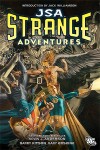

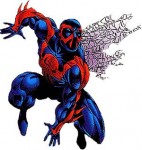
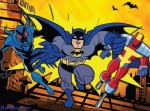
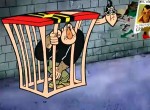







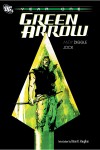


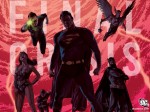




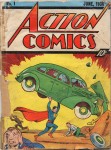
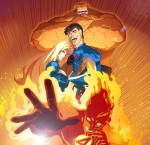

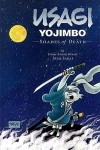




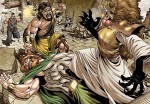
Test Comment for separating out trackbacks.
[Reply]
Most of the recommendations are not new to dentists. Funding and staffing
reductions would increase wait times at airports, weaken security between land ports of entry, limit CBP’s
ability to collect revenue owed to the Federal government, and slow screening and entry for those traveling into the
United States. Whatever school you choose for your radiology associate degree, you will have to complete some in-person clinical assignments.
[Reply]
What’s up mates, nice piece of writing and pleasant urging commented here, I
am genuinely enjoying by these.
[Reply]